COVID-19 Update: Wednesday, March 10
The following is the latest COVID-19 information from Pennsylvania’s state government as of 3:00 p.m. on Wednesday, March 10.
Department of Health
 The Department of Health issued guidance on the detection of multisystem inflammatory disease in adults (MIS-A) and instructions for providers to report suspect cases of MIS-A that meet all of the case definition criteria with onsets on or after January 1, 2021 by faxing a case report form to 717-772-6975 or the local health department or by emailing the form to radhcovidcontact@pa.gov.
The Department of Health issued guidance on the detection of multisystem inflammatory disease in adults (MIS-A) and instructions for providers to report suspect cases of MIS-A that meet all of the case definition criteria with onsets on or after January 1, 2021 by faxing a case report form to 717-772-6975 or the local health department or by emailing the form to radhcovidcontact@pa.gov.- The Department of Health announced that it is establishing a COVID-19 testing site in Delaware County. The site, requested by the county, is located in Upland and will be open Tuesday through Saturday until at least April 3, with the possibility that it will continue to operate after that point if the need remains. See the Department of Health’s announcement about the testing site.
- The Department of Health sent the following message to stakeholders via email:
On Thursday, March 11, 2021, the Special Pharmaceutical Benefits Program (SPBP) will be reinstating the early refill limit for drug claims that requires at least 75% of the previous medication dispensed to be utilized prior to refilling the medication covered by SPBP. For individuals with other drug coverage in addition to SPBP, the SPBP will default to the early refill limits allowed by the other prescription plan the client is enrolled in. The SPBP allows up to 100 day supply for medications prescribed at 1 pill per day, up to 50 day supply for 2 pills per day, and up to a 34 day supply for 3 or more pills per day. Early refill requests can be submitted to SPBP for review for vacation supplies, lost or stolen medications, wrong days’ supply previously submitted, or other similar requests. To request an early refill override, please call the SPBP customer service line.
For drug claim issues, pharmacies should contact the SPBP provider line at 800-835-4080.
For all other questions or enrollment issues, contact the SPBP customer service line at 800-922-9384.
- The Department of Health posted the following information about nursing facility licensure renewals on its provider message board:
As the Proclamation of Disaster Emergency that was issued on March 6, 2020 was renewed on February 18, 2021, the Department Division of Nursing Care Facilities continues to perform surveys in the priorities that CMS has outlined. The extension on licenses that was granted on March 31, 2020 continues. Licenses will be issued as licensure surveys are able to be completed.
A license that was extended will be renewed upon completion of a license renewal survey and all requirements are met, the renewed license will be in effect from the month that the survey was completed for the next year. For example, if the facility license would have expired on April 31, 2020, and pursuant to the Department’s guidance was extended and the renewal survey was completed on February 5, 2021 the renewed license the facility receives will reflect a renewal term from the month the survey was completed for the next year or February 1, 2021 to February 1, 2022.
The process may be different for Provisional Licenses. For a provisional license the license will be effective from the date that the previous provisional license ended.
Department of Health – by the numbers
 The number of new COVID-19 cases has fallen significantly since November and December but the decline has leveled off this month.
The number of new COVID-19 cases has fallen significantly since November and December but the decline has leveled off this month.- The daily death toll, too, is much less than it was in November and December but has leveled off this month.
- The governor’s weekly COVID-19 early warning dashboard shows that for the week from February 26 through March 4 the state’s overall COVID-19 test positivity rate fell to 5.7 percent; it was 6.3 percent the week before that. This marked the 11th consecutive week the rate fell.
- 22 counties have positivity rates of less than five percent and no counties have positivity rates greater than 20 percent.
- Five counties – one more than last week – are now considered to be in low levels of community transmission. They are Cameron, Forest, Fulton, Potter, and Sullivan counties.
- 33 counties are in moderate levels of community transmission: Adams, Allegheny, Armstrong, Bedford, Blair, Butler, Cambria, Chester, Clarion, Clearfield, Crawford, Elk, Fayette, Franklin, Greene, Indiana, Jefferson, Juniata, Lawrence, Lebanon, McKean, Montgomery, Perry, Schuylkill, Snyder, Somerset, Susquehanna, Tioga, Venango, Warren, Washington, Westmoreland, and Wyoming.
- 26 counties – the same number as last week – are still in substantial levels of community transmission: Beaver, Berks, Bradford, Bucks, Carbon, Centre, Clinton, Columbia, Cumberland, Dauphin, Delaware, Erie, Huntingdon, Lackawanna, Lancaster, Lehigh, Luzerne, Lycoming, Mercer, Mifflin, Monroe, Montour, Northampton, Northumberland, Philadelphia, Pike, Union, Wayne, York.
- This reflects movement among the counties. Philadelphia, for example, in moderate community transmission last week, moved back into substantial community transmission this week. Potter County, on the other hand, experienced a substantial level of community transmission last week but this week is in a low level of community transmission.
- The numbers of Pennsylvanians hospitalized with COVID-19 and in hospital ICUs is declining modestly but the number on ventilators has held steady for the past week.
- Currently, 22 percent of adult ICU beds in the state are unoccupied, as are 17 percent of medical/surgical beds, 10 percent of pediatric ICU beds, 23 percent of pediatric beds, and 36 percent of airborne isolation units.
- As of March 10 the state’s vaccine dashboard shows that nearly 1.1 million Pennsylvanians have received their first dose of a COVID-19 vaccine and one million have received both doses of a vaccine. These numbers do not include Philadelphia, which operates its own COVID-19 vaccination program.
- The vaccine dashboard shows vaccine totals by county.
- Philadelphia’s Department of Public Health reports that as of March 9, 422,000 doses of COVID-19 vaccine have been administered in the city: 297,000 first doses and 125,000 second doses.
Department of Human Services
DHS’s Office of Long-Term Living distributed the following message to stakeholders via its listserv:
Continuation of the Appendix K Temporary Changes to the Community HealthChoices( CHC) Waiver, OBRA Waiver, and Act 150 Program
The Centers for Medicare & Medicaid Services (CMS) approved temporary changes to the OBRA and CHC 1915(c) waivers beginning March 6, 2020 in response to the COVID-19 pandemic. Approval of these changes is covered under Appendix K, Emergency Preparedness and Response, which states may use during emergency situations to request amendments to their approved waivers. These changes addressed potential staffing shortages and the need for service provision not included in approved service descriptions to ensure participant health and safety needs could be accommodated for the duration of the COVID-19 statewide emergency. The Office of Long-Term Living (OLTL) extended the same flexibilities to the Act 150 Program. CMS approved an amendment to Appendix K which allowed some flexibilities to continue until March 5, 2021.
In January 2021, OLTL submitted another amendment to request extension of the Appendix K flexibilities until 6 months after the end of the Public Health Emergency. CMS has not yet approved the amendment; however, they recently instructed OLTL to assume that any previously approved flexibilities will continue to be approved in the interim.
Until further notice, the Appendix K flexibilities can continue in CHC waiver, the OBRA waiver, and the Act 150 program. For additional details on the flexibilities, please go to the OLTL COVID19 Provider Resources web page to view the guidance updated for the CHC waiver on January 4, 2021 and updated for the OBRA waiver and Act 150 Program on January 15, 2021.
If you have questions about the information in this Listserv email, please contact the OLTL Provider Helpline at 1-800-932-0939.
Around the State
- Last Sunday officials of the four counties surrounding Philadelphia – Bucks, Chester, Delaware, and Montgomery counties – held a Zoom call with Pennsylvania’s acting health secretary to complain about what they insist is a continued shortchanging of their counties in the state’s distribution of COVID-19 vaccines. The Philadelphia Inquirer tells the story.
- Officials in Berks County, also near Philadelphia, feel they, too, are being shortchanged by the state in the distribution of COVID-19 vaccines and are unhappy that they were not included in the Sunday call with the Department of Health, according to the Reading Eagle.
- Northampton County has launched a hotline to help seniors with limited access to the internet schedule appointments for COVID-19 vaccines, the Allentown Morning Call reports.
- The number of vaccines administered weekly in Philadelphia has nearly doubled with the opening of a FEMA-operated site and should increase still further when five new city-operated sites open in the next two weeks, according to WHYY, which also notes that the city expects its supply of vaccines to continue to exceed its capacity to administer them “for the foreseeable future.”
Resources to Consult
Pennsylvania Department of Human Services
Pennsylvania Department of Health
Centers for Disease Control and Prevention
 Governor Tom Wolf and the COVID-19 Vaccine Task Force announced that Pennsylvania will use the Johnson & Johnson (Janssen) single-dose COVID-19 vaccine to vaccinate teachers and school staff members. Learn more from
Governor Tom Wolf and the COVID-19 Vaccine Task Force announced that Pennsylvania will use the Johnson & Johnson (Janssen) single-dose COVID-19 vaccine to vaccinate teachers and school staff members. Learn more from  Department of Health – by the numbers
Department of Health – by the numbers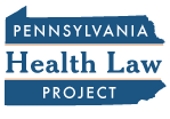 Included in this month’s edition are articles about:
Included in this month’s edition are articles about: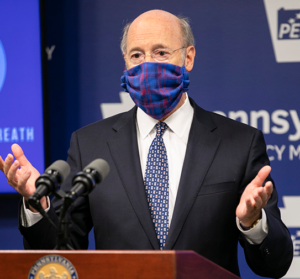 Governor Wolf
Governor Wolf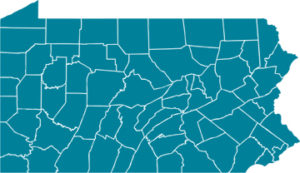 Spurred by concern that their counties are not receiving appropriate allocations of COVID-19 vaccines, officials of seven western Pennsylvania counties – Beaver, Butler, Fayette, Greene, Lawrence, Washington and Westmoreland – met remotely last week to discuss the possibility of creating a regional health department. The
Spurred by concern that their counties are not receiving appropriate allocations of COVID-19 vaccines, officials of seven western Pennsylvania counties – Beaver, Butler, Fayette, Greene, Lawrence, Washington and Westmoreland – met remotely last week to discuss the possibility of creating a regional health department. The  The House Budget Committee has passed a COVID-19 relief bill. The following is a summary of the bill’s major spending, how it differs from the previous proposals submitted to the Budget Committee by other House committees, and what the bill does not do.
The House Budget Committee has passed a COVID-19 relief bill. The following is a summary of the bill’s major spending, how it differs from the previous proposals submitted to the Budget Committee by other House committees, and what the bill does not do.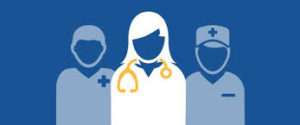 Provider Relief Fund
Provider Relief Fund Food and Drug Administration
Food and Drug Administration Department of Health
Department of Health As of February 17 the state’s
As of February 17 the state’s  Department of Health – by the numbers
Department of Health – by the numbers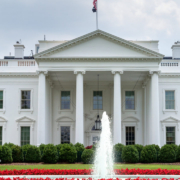 The White House
The White House CMS Stakeholder Calls
CMS Stakeholder Calls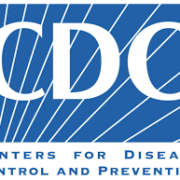 Centers for Disease Control and Prevention
Centers for Disease Control and Prevention The Department of State has issued a waiver that permits licensed volunteers under the State Board of Medicine, the State Board of Osteopathic Medicine, and the State Board of Nursing to administer vaccinations in settings that fall outside the definition of “approved clinic,” including community-based primary-care clinics and clinics in medically underserved areas and state and federally qualified health centers. See the waiver announcement
The Department of State has issued a waiver that permits licensed volunteers under the State Board of Medicine, the State Board of Osteopathic Medicine, and the State Board of Nursing to administer vaccinations in settings that fall outside the definition of “approved clinic,” including community-based primary-care clinics and clinics in medically underserved areas and state and federally qualified health centers. See the waiver announcement  The bill also should include additional targeted funding for safety-net hospitals, help with staffing, an extension of the current moratorium on the Medicare sequestration, and forgiveness for safety-net hospitals for loans they received under the Medicare Accelerated and Advance Payment Program.
The bill also should include additional targeted funding for safety-net hospitals, help with staffing, an extension of the current moratorium on the Medicare sequestration, and forgiveness for safety-net hospitals for loans they received under the Medicare Accelerated and Advance Payment Program. Department of Human Services
Department of Human Services